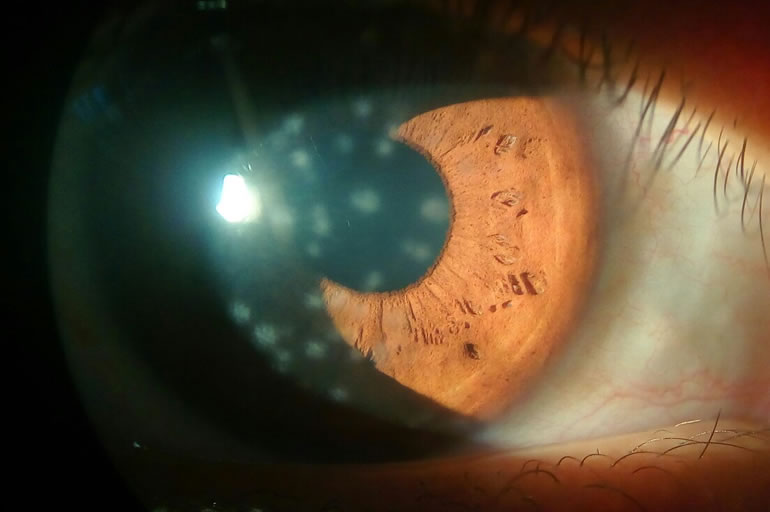Keratitis
Keratitis is inflammation of the cornea, and like inflammation anywhere can have multiple causes. We will consider the main causes.
Contact Lens Associate Keratitis (CLAK)
CLAK is very common, but the challenge is to differentiate relatively benign immune-mediated CLAK from an infective keratitis which is also commoner in contact lens wearers. Fortunately, the two entities usually look quite different, and an experienced corneal specialist can often differentiate the two with a careful examination.

Infective keratitis
Infective keratitis is also called microbial keratitis. This is a very serious condition indeed, and without prompt treatment there is a real risk of losing vision and even the eye. After sampling for laboratory investigation, intensive antibiotic treatment is required day and night for the first few days, and this is usually very time-consuming and prevents normal daily activities. One particular microbe, acanthamoeba is even more serious as it is very difficult to diagnose. A more prolonged treatment is required over several months and a corneal graft may be required to treat the scarring that occurs with healing but which degrades vision.
Keratoconjunctivitis sicca
Keratoconjunctivitis sicca means inflammation of the cornea and conjunctiva due to dry eye disease. This can be mild, but occasionally can progress to serious corneal involvement with the potential for loss of vision. As such, corneal involvement in dry eye syndrome should always be taken seriously.
Viral keratitis
The two commonest causes of viral keratitis are the shingles virus (Varicella Zoster) and the cold sore virus (Herpes Simplex). Varicella-Zoster Virus causes chicken-pox in children but reactivates from latency in adults and causes shingles. In the UK, a chicken-pox vaccine is generally not advised as the condition is so common, however, an adult vaccine to reduce the risk from shingles is now available for those between 70-79 years of age. If shingles involves the eye, the keratitis can drag on for years and even decades, and treatment needs to be promptly started. Any eye involvement with shingles needs ophthalmic management as a matter of urgency. Herpes Simplex Virus is the cause of cold sores, usually around the mouth. However, if the virus affects the eye, a serious keratitis can result. If you get cold sores and develop a red eye, you need an ophthalmic examination as some eye drops (steroids) can make the disease dramatically worse. The treatment of both these types of keratitis may involve antiviral drugs and anti-inflammatories, but in some cases surgery may be required to restore vision.
